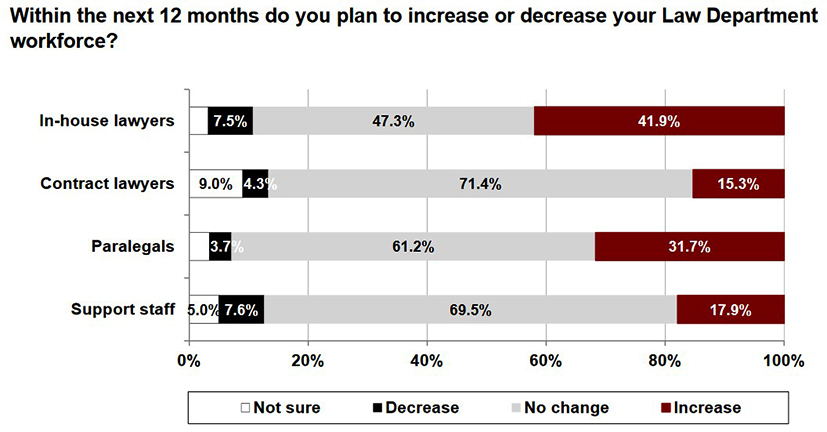Entity Management software
A Guide for Legal Professionals

Legal professionals are often tasked with filing, managing and tracking corporate entities, as well as handle risks, deadlines, and other compliance responsibilities.
One way of doing this is by placing lots of sticky notes all over a computer monitor as way of reminding you of filing deadlines or specific tasks you need to perform.
But let’s face it – there’s just not that much real estate available on a computer monitor!
In all seriousness, Legal entity management is too important to manage in such an informal way, and requires a system that can handle tracking all kinds of information, as well as providing workflows, filing and deadline reminders, and a mechanism for reporting on data contained in the system.
Why is Legal Entity Management Important?
Filing and Managing Registrations

All of these can have registrations in one, or even multiple jurisdictions. A legal organization or department needs to have a strong system in place to perform and monitor actions related to these filings.
These tasks can include:
• Centralizing all registrations to allow for viewing in one location
• Tracking ownership of each entity
• Keeping track of managers and directors of each entity
• Document storage of entity filings, such as articles of incorporation, insurance
policies, etc.
• Monitoring and responding to requirements of changing laws and regulations
• Automating tasks associated with managing legal entities
Managing Risk
Having all of this information organized and properly maintained is good for business. It allows an entity to minimize risks associated with the various entities, and protects the broader organization.
In addition, legal entity management helps the organization be proactive about staying on top of filing deadlines and changes that could be potentially problematic.

Types of Information and Entities

Entities represent the form of incorporation for a business and can include:
• Limited Liability Company (LLC)
• Subchapter S Corporation (S Corp)
• Subchapter C Corporation (C Corp)
• Non-Profit Corporation
• General Partnership
• Limited Partnership
All of these entities will have common information, including the entity’s legal name, form of organization, legal address, principal place of business, jurisdiction, date of incorporation, and registered agent information.
Documents
Legal entity management systems will also have the ability to store documents related to the entity filing. Some of these documents include Articles of Incorporation, Corporation Bylaws, Ownership Agreements, Partnership Agreements, and Employment related agreements.
Filings
Each entity may require a number of filings, and these may be needed across jurisdictions. A legal entity management system can track all aspects of filings, from creation to dissolution.
Officers and Directors
The system can store information on officers and directors, and can manage the relationships each has with a specific entity.
How Legal Entity Management Software Can Help Organize and Use Information

Software for legal entity management will provide a means of presenting information in a useful way. For example, in house counsel may need to identify percentages of ownership of a particular business entity.
This can usually be a simple query, as opposed to searching through multiple paper documents for such information.
The system will likely also capture additional information such as who is on the board of directors, the entity type, and any important information related to the entity.
A company may also need to track entities in multiple jurisdictions. For example, many businesses incorporate in the state of Delaware. Additional jurisdictions could lead to additional business needs, such as special filings, permits or licenses.
A legal entity management system can organize data efficiently, and provide an easy means for viewing what is needed for an entity to remain in compliance with the rules of a specific jurisdiction.
The system can also provide notifications to ensure filings and important dates aren’t missed.
Customization
A good legal entity management system is going to be customizable to meet the needs of individual legal departments. In house counsel may have a different need than a medium sized law firm, and a solo practitioner who does a lot of business entity filings will also have a different approach.
These systems are not “one size fits all.” It is important to work with a legal technology vendor who will take the time to understand what it is you need so that the solution can be designed to provide your organization the most value.
Document Storage, Sharing and Management
There’s no question that a large part of entity management includes paperwork – there are many documents that need to be written, filed and stored. Legal entity management systems will usually have a document repository, with “OCR” technology used to manage and retrieve documents.
OCR stands for optical character recognition. This technology is used to digitize printed documents, making it easier to store and search documents.
It can even be used in conjunction with emerging technologies such as artificial intelligence and machine learning.
Automation
Being able to have some tasks performed automatically is helpful for any business, particularly legal professionals. A legal entity management system will usually have capabilities to achieve this.
Some of the tasks that could be automated include parts of document assembly, as well as filing alerts. Automation saves time and money through the elimination of these tasks.
Robust Reporting
As mentioned above, many organizations are data rich, but information poor. However, this is an area that has grown in recent years.
Business intelligence is a term that is often used these days to address and identify the reporting needs of organizations. CIO Magazine defines it by stating “Business intelligence (BI) leverages software and services to transform data into actionable insights that inform an organization’s business decisions.”
Business intelligence utilizes tools to help facilitate access to data insights. Legal entity management systems will have a reporting component which can be used to glean insights about many aspects of the department’s work.
For example, some systems can integrate with Microsoft’s Power BI, a great tool for creating reports and data visualizations.
Insights can be presented in spreadsheets, as well as in graphs and charts that call attention to potential outliers and issues with filings.
How Does Legal Entity Management Fit in With Other Legal Systems?

Each of these systems are focused on managing aspects of the work performed by a legal department or firm, whether it is managing litigation, client interactions, or time spent on a matter.
Legal entity management may focus on a different area within the legal operations framework, but usually fits in with the “big picture” of an organization’s legal technologies.
Standalone Legal Entity Management or Integrate with Other Systems
As referenced above, legal entity management system is just one component in the bigger picture of enterprise legal management, “ELM” for short. This is a broad term which encompasses the people, processes and technologies used in managing all aspects of legal operations.
It is acceptable to have a standalone legal entity management system, but having several legal systems bundled together is more ideal – it saves time and money by avoiding redundancy in data, as well as provides strong integration.
For example, a legal department or firm may want to understand how much time was spent on an entity filing. This would require integration between the legal entity management system and a billing system.
It is much easier for an organization to utilize an all in one system that can handle contract management, matter management, legal entity management and billing, because related files can be easily integrated between these various components.
This translates into more time to focus on the actual matter itself, versus searching for all the different pieces of information in various systems.
What is Needed to Get Started With A Legal Entity Management System?

What do you need to track?
How do you need the system set up? The previous discussion is a good starting point, but there are some additional considerations as well:
Consideration – Outlook and Office 365 Integration
Legal entity management often means multiple communications about entities. For example, legal organizations will often receive relevant entity information via email from shareholders, directors, or other parties.
Consider a system that will have built in integration with Microsoft Outlook and Office 365, which are among the most used applications in today’s business world.
A good legal entity management system will be able to track emails, and also offer shared calendaring options. How nice would it be to have important filing dates automatically added to your calendar?
In addition, integration with Office 365 applications such as Word allows for the ability to utilize mail merging features such as the creation of letters or bulk emails to all relevant parties.
No one wants to have to create the same letter to multiple parties, and having a legal entity management system with mail merge capabilities means this won’t be necessary.
Consideration – Document Sharing
Oftentimes, multiple individuals need to perform a task associated with a matter, and may need to view or update a particular document. Sure, one can email it around to multiple individuals, but there is potential for losing the “source of truth” document, or the one that contains ALL of the most recent updates.
Ted from Accounting may be off on Tuesday, and several copies of a document might sit in his email for a day, because others circulated and updated the document. Which one should he use for his task?
Document sharing capabilities eliminate this issue. A tool such as SharePoint, which allows web-based collaboration, allows users to view and modify documents so that there are not multiple copies of a document floating around, with questions about which one is correct.
These systems also “version” documents, so that updates are tracked. A good legal entity management system can integrate with SharePoint.
This is a great feature, as it leads to smoother integration between systems and easier management of important documents.
Consideration – Workflows
The end to end process of legal entity management likely includes input or work from several individuals, often in a particular sequence. This process can be managed in a legal entity management system through the building and use of a workflow.
One person may be required to perform the task of adding the initial entity record into the system, while another person may be responsible for reviewing and adding required documents, such as Articles of Incorporation or Corporation Bylaws.
A workflow can be built that will provide many notifications to complete certain tasks. For example, the initial user may receive a notification that a new entity is ready to be added to the system. Then, the next user may receive a notification that Articles of Incorporation need to be added.
Workflows can be added for the entire lifecycle of an entity, from creation to dissolution, or can be modified so that only a portion of tasks are addressed through this mechanism. It’s a very customizable option that lets all parties know that work needs to be performed on an entity.
In addition, workflows can operate in conjunction with document sharing features such as SharePoint integration, as well as other components.
Consideration – On premise or Cloud based
Once you have the basic requirements, assess whether you want your system to be on premises or a cloud-based solution. There are benefits to both – cloud based solutions are often a less expensive option, but on-premise solutions could allow for easier access to fix any potential system issues.
This article was designed to provide an overview of legal entity management systems, what they do, what features are usually present, and how they are one piece of the puzzle legal organizations can use to manage, optimize, integrate and perform tasks.
Hopefully, this information will prove useful as your organization makes decisions on how to best approach legal entity management business needs.




